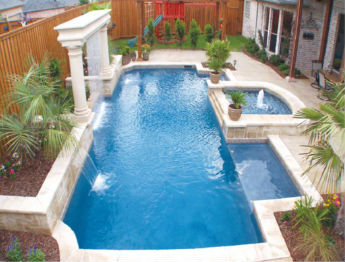Some service technicians visit their customers’ pools frequently and think they know them so well that they may be tempted to occasionally skip the tests. If they’re in a hurry, they might perform fewer tests or take dubious shortcuts.
Big mistake. Experts say such shortcuts lead to long hours solving the problems they create. If you test consistently and interpret the results correctly, the water will remain balanced, and your job will be much easier.
Testing methods
Here’s a rundown of the water tests available, and how to complete them accurately.
Titration test: This test utilizes reagents (chemicals) that are dropped into the water sample and cause a change in color. The variable here is not the hue of the color, but rather the number of drops needed to change the color. Each drop correlates to a specific level of the factor being tested. This method typically measures pool water’s total alkalinity (TA) and its calcium hardness. The FAS-DPD method, which tests free and combined chlorine, also is a titration test.
Colormetric test: Perhaps the most common type of test, it’s designed to measure the amount of sanitizers, such as chlorine or bromine, in the water as well as determine pH levels. Here, reagents are added to a water sample. The resulting color is compared to a chromatic scale known as a color comparator. This scale will indicate the pH or chlorine level of the water.
Test strip: This method also is quite popular with residential pool service techs. The strip is dipped into the water sample, enabling the reagents on the strip to react with chemicals in the water. The reaction will change the color of the pads on the end of the strip. Again, a color comparator quickly shows the level of the factor being tested. Test strips can measure sanitizer, pH, acid and base demand, calcium hardness, cyanuric acid, TA and metals.
Turbidity test: Commonly used to measure CYA levels, this test relies on reagents, too. The reagent reacts with the chemical being tested to create turbidity rather than a color. The relative cloudiness of the water is used to generate a reading.
Electronic test: This is basically a meter with an electrode, designed to read levels of specific chemicals or other pool water factors. It’s often used to test sanitizer levels, TDS and, most commonly, pH. The meter must be constantly calibrated and the electrode kept clean to ensure accurate results. It’s more expensive than a test kit, but some techs say it saves time and is worth the money.
A Checklist for Pool Water Care
Every pool is different. So pool and spa service technicians must have adequate arsenals of water-treatment chemicals in order to respond to any and all water emergencies — and even to conduct routine maintenance.
Here’s a checklist of essentials that service professionals say they need for the pools in their charge:
• Algaecides and algae solutions
• Balancers
• Cleaners and enhancers
• Oxidizers
• Sanitizers
• Stain preventers
• Test kits
• Winterizers
